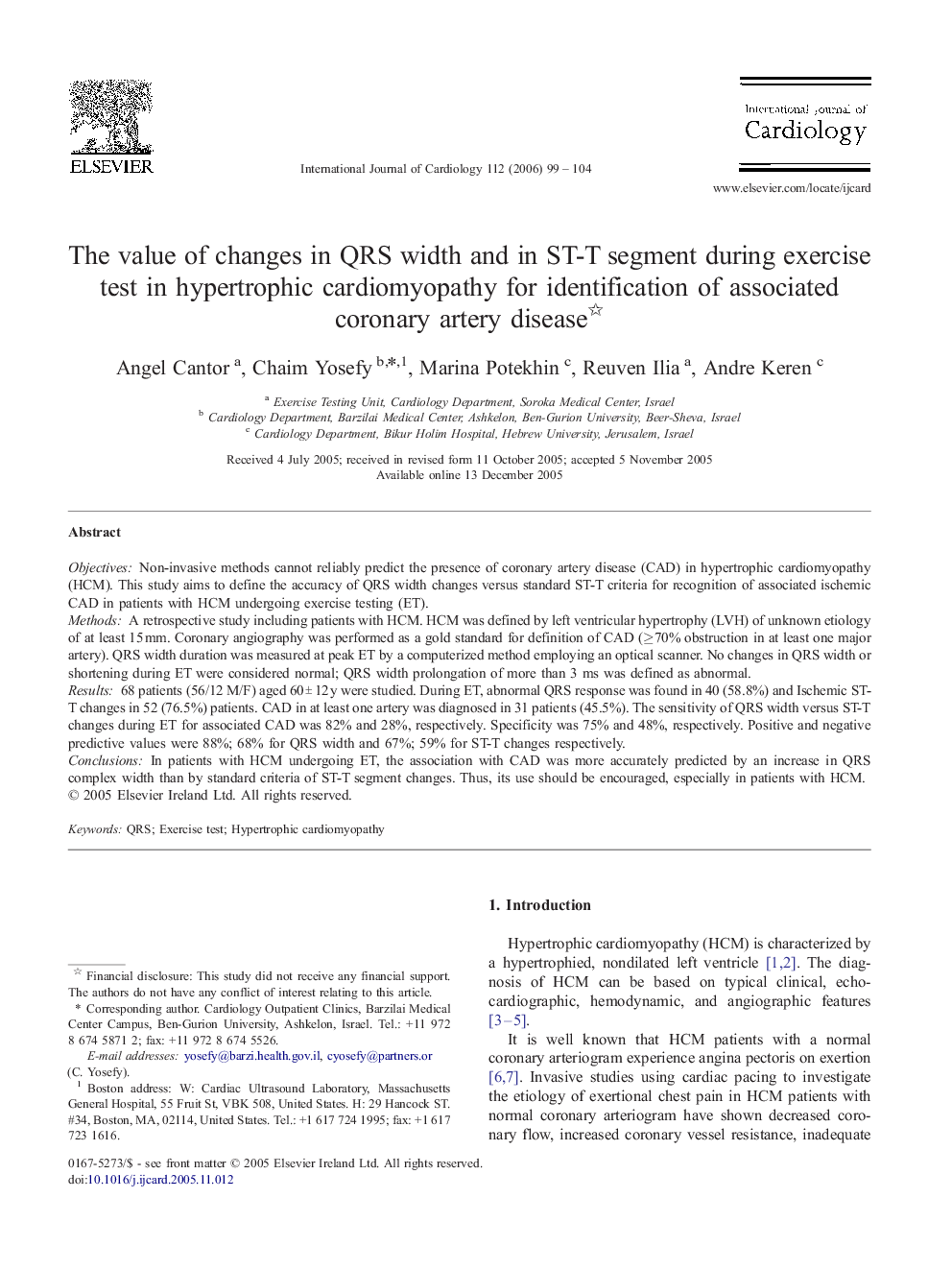| Article ID | Journal | Published Year | Pages | File Type |
|---|---|---|---|---|
| 2935898 | International Journal of Cardiology | 2006 | 6 Pages |
ObjectivesNon-invasive methods cannot reliably predict the presence of coronary artery disease (CAD) in hypertrophic cardiomyopathy (HCM). This study aims to define the accuracy of QRS width changes versus standard ST-T criteria for recognition of associated ischemic CAD in patients with HCM undergoing exercise testing (ET).MethodsA retrospective study including patients with HCM. HCM was defined by left ventricular hypertrophy (LVH) of unknown etiology of at least 15 mm. Coronary angiography was performed as a gold standard for definition of CAD (≥ 70% obstruction in at least one major artery). QRS width duration was measured at peak ET by a computerized method employing an optical scanner. No changes in QRS width or shortening during ET were considered normal; QRS width prolongation of more than 3 ms was defined as abnormal.Results68 patients (56/12 M/F) aged 60 ± 12 y were studied. During ET, abnormal QRS response was found in 40 (58.8%) and Ischemic ST-T changes in 52 (76.5%) patients. CAD in at least one artery was diagnosed in 31 patients (45.5%). The sensitivity of QRS width versus ST-T changes during ET for associated CAD was 82% and 28%, respectively. Specificity was 75% and 48%, respectively. Positive and negative predictive values were 88%; 68% for QRS width and 67%; 59% for ST-T changes respectively.ConclusionsIn patients with HCM undergoing ET, the association with CAD was more accurately predicted by an increase in QRS complex width than by standard criteria of ST-T segment changes. Thus, its use should be encouraged, especially in patients with HCM.
